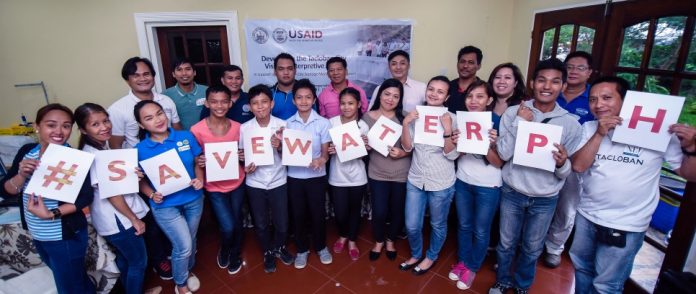By Mona Grieser
Water resource challenges in the Philippines
For many people in the Philippines, water through heavy rains has always been an abundant resource. More recently however that has changed. In my years living and working throughout the country, I’ve experienced how population growth and rural-urban migration are further stressing water availability. Warming temperatures and the El Nino phenomena are also causing rivers to dry up earlier than usual.
In the south, particularly the Mindanao region, scarcity is a new phenomenon. The only tool seemingly available to water service providers (water districts) and concerned local governments was rationing. They hoped to find new water sources, create dams and find alternative rivers to supplement supply. But such infrastructure development will require huge investments.
Addressing the Challenges
From 2013 to 2017, I was fortunate to lead the Water Security for Resilient Economic Growth and Stability (Be Secure) Project funded by the United States Agency for International Development (USAID) and implemented by AECOM. In Be Secure, we worked with water districts, local and national governments, and the public to address water scarcity in six provinces throughout the Philippines.
In the process, our team consulted with local stakeholders and discovered that aside from the increasing attention to water loss management in water districts, demand-side water management strategy for efficient water use was lacking. For example, water consumption amongst the large consumers remained high because the system to sustain water efficiency was not in place.
I had learned through another development project in Jordan, a water-scarce country, that water demand management (WDM) was an effective water conservation solution. Be Secure thus viewed these challenges as opportunities to test WDM principles. We also validated potential application of WDM with local partners to (1) allow water districts to expand their services to new subscribers with the water they would save from losing less water in the system; (2) postpone the need for costly infrastructure; and (3) vastly increase efficient water use of newly constructed homes, hotels, businesses, industry, governmental and commercial buildings.
Introducing WDM
We initiated WDM introduction through a peer-to-peer exchange by facilitating visits between technical experts from regions with similar scarcity issues such as Australia, Jordan, and the U.S. These personnel, drawn from water utilities, plumbing associations, and city governments and who had embraced water demand as a tool for addressing water scarcity, shared knowledge about their WDM experiences to an audience of Filipino decision-makers, industrial and commercial leaders, and water district managers.
Excited at the possibility of reducing their costs and expanding their services, the response was electric. Industry leaders requested training for their industrial and commercial engineers, foreseeing how their water costs could be substantially reduced. Local governments such as in IloIlo and Zamboanga cities saw the impact of postponing costly infrastructure, while at the same time expanding the number of persons with water access in response to the UN sustainability goals. We further broadened discussions by linking with the plumbing industry for a longer-term effort to update the country’s plumbing code.
Promoting WDM
We carried out strategic public and policymaker outreach. We partnered with the media to extend outreach on water conservation and organised learning forums with media professionals on WDM, water security and climate change. We created a short film “Your Water, Your Choice” to help young Filipinos better understand how climate impacts affect water security and to encourage water conservation and efficient water use at their homes. And we distributed outreach materials and film clips to local governments and water districts and worked with over 60 cinemas for nationwide release.
Implementing WDM
We recognised the need to prove how WDM can work. At the request of the Zamboanga City Water District (ZCWD), we developed a programme to train ZCWD staff on water auditing methodologies. This process would show inefficiency in water supply to buildings and solutions to reduce that inefficiency. Within weeks, ZCWD established a dedicated WDM unit. At the same time, we worked with the Zamboanga City government to help update the city plans and develop building efficiency ordinances and codes for all new construction that entailed water harvesting systems, low-flush toilets, and other solutions.
Moving ahead with WDM
New partners became interested. We supported the Western Mindanao State University to develop a training curriculum and establish the country’s first WDM training hub together with the ZWCD. Business round-tables asked for more capacity building and tools for applying efficiency. Partner government departments learned to perform water audits and began to require water harvesting systems in key buildings.
Through these measures, the USAID/Be Secure project has confirmed that WDM is a proven tool for improving water security in the Philippines!
AECOM is recipient of Silver in the category ‘Exceptional Project Execution and Delivery’ of the 2018 IWA Project Innovation Awards for its project Building Resilience in the Philippines with Systems, Technologies and Partnerships: The USAID Be Secure Project.








